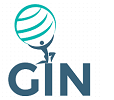The prevalence of hospital-acquired infections (HAI) has been growing rapidly, with HAIs becoming among the key cause of mortality and morbidity in hospitalized patients, as per the World Health Organization (WHO). These infections are caused primarily by bacteria. Strains of bacteria found in medical settings are more resistant to antibiotics those found outside the hospital, owing to the fact that antibiotics are utilized frequently in hospitals. According to the WHO, about 7 and 10 of every 100 patients ion developed and developing countries, respectively, who are hospitalized, acquire at least one HAI at any given time.
 |
| To learn more about this report: https://bit.ly/30zsWpo |
Attributed to this, the demand for infection surveillance at hospitals and other medical facilities is growing rapidly. Traditionally, the surveillance of HAIs was done by reviewing medical charts, ward rounds, and paper-based reports of microbiologic results. The analysis then was done by assembling hand-written data or entering the information into a computer database, manually. However, these methods are labor intensive, time-consuming, and quite inefficient for coping with the rising complexity of antibiotic resistance. Because of this, these methods are become obsolete and witnessing a shift to computer-based surveillance. Due to these factors, the global infection surveillance solutions market is predicted to advance at a considerable pace in the coming years.
In addition to this, a large number of key companies that offer web-based and on-premises solutions to track and check the spread of HAIs are present in the region. This being said, the demand for these solutions and associated services is predicted to increase substantially in the Asia-Pacific region, thereby making it the fastest growing infection surveillance solutions market in the years to come. This is attributed to the growing awareness and accessibility to advanced healthcare facilities, rising healthcare expenditure, surging incidence of HAIs, and expanding health insurance sector in the region.
Hence,
the requirement for infection surveillance solutions is growing due to the
rising prevalence of HAIs across the globe.















